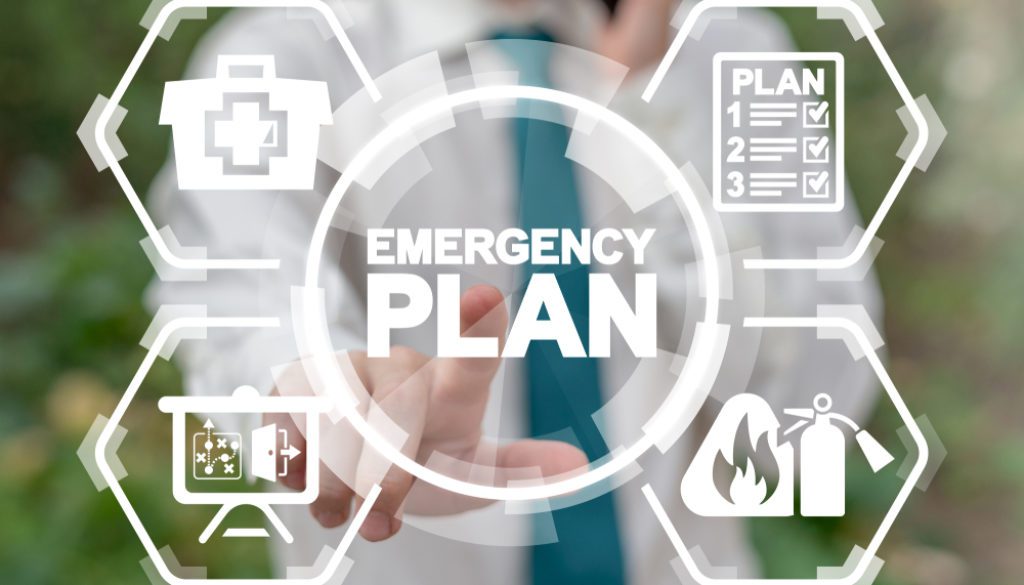June Safety Training: Emergency Preparedness
Crisis scenarios can happen at any time in any location. Schools, healthcare institutions, corporations and government organizations must be prepared to respond to and recover from an emergency. Effective crisis preparations must involve the entire workforce and account for external factors, such as local law enforcement and first responders.
Emergency preparedness encompasses more than just creating a response plan and identifying incident managers. It’s also crucial to find ways to mitigate the risks of an emergency situation and develop effective recovery plans. Incorporating emergency preparedness into annual safety training helps ensure that employees and managers at all levels are ready to react quickly and safely in a crisis.
Many organizations are ill-prepared for an emergency
Many companies, schools and healthcare institutions don’t have a well-defined crisis response plan. A recent survey shows that approximately 33% of companies have never tested their severe weather emergency plans, and 37% of employees had never participated in drills for medical emergencies.
Another survey shows that 28% of businesses don’t spend adequate time or resources to prepare for a chemical emergency. Fewer than 5% of organizations have any full-time crisis management personnel on staff.
Most small businesses are ill-prepared for crisis situations. The U.S. Chamber of Commerce Foundation reports that nearly three-quarters of small businesses in America don’t have an emergency plan. An even higher number of small businesses are uninsured or underinsured.
Top emergency preparedness topics
Comprehensive safety training prepares employees for every stage of a crisis, from prevention through recovery.
- Threat identification and mitigation: Take the time to consider all potential crisis scenarios, and work with incident managers to reduce threats and tighten security.
- Emergency reporting and response: Develop specific, detailed plans for each type of potential disaster. Ensure workers have reliable ways to report suspicious behavior and activate alarms.
- Crisis management: Train incident managers to respond to each type of crisis scenario. Develop emergency documentation and clear instructions for coordinating with 9-1-1 and first responders. Ensure crisis managers can access key information and documentation from off-site locations.
- Drills and tests: Tabletop exercises and practice drills (e.g., fire or active shooter drills) help individuals hone their response skills. Perform an After Action Review following a drill to identify successes and areas for improvement.
- Crisis communication: Verify communication procedures so incident managers can notify employees of a crisis. Give all employees reliable methods for alerting internal security and 9-1-1. Create templates for emergency alert notifications so administrators can send them as quickly as possible.
- Recovery plans: Make plans to check in with employees, address any damage to property and infrastructure and develop a realistic timeline for returning to normal operations.
Common crisis scenarios include severe weather, unplanned outages, fires, medical emergencies, cyberattacks and active shooter events. Some organizations may also incorporate industry-specific threat training, such as manufacturing equipment failures, data breaches and supply chain disruptions.
Ensure your workforce is prepared for a crisis
Emergency preparedness is crucial for corporations, schools, hospitals and government entities. Safety training teaches workers how to respond in a crisis and helps incident managers test existing alert and response plans. Ideally, emergency preparedness training should be customized to an organization’s size and most likely threats.
Emergency response and recovery measures depend on reliable communication. Employees must be able to report a crisis and receive emergency alerts wherever they are. Security personnel and incident managers need to connect with 9-1-1 and first responders to develop and deploy a coordinated response. And communication must continue during the recovery phase so managers can monitor each employee’s condition and know when they are ready to return to work.
Rave Mobile Safety provides several communication solutions designed to enhance emergency preparedness in all types of organizations. Our critical communication system allows fast, multichannel messaging between managers and employees. Incident management solutions facilitate collaboration between first responders and internal security forces. Our systems feature cutting-edge technology, easy-to-use interfaces and over 99.99% uptime. Contact our team to learn about our prepackaged communications systems or get information on customizing a solution.





